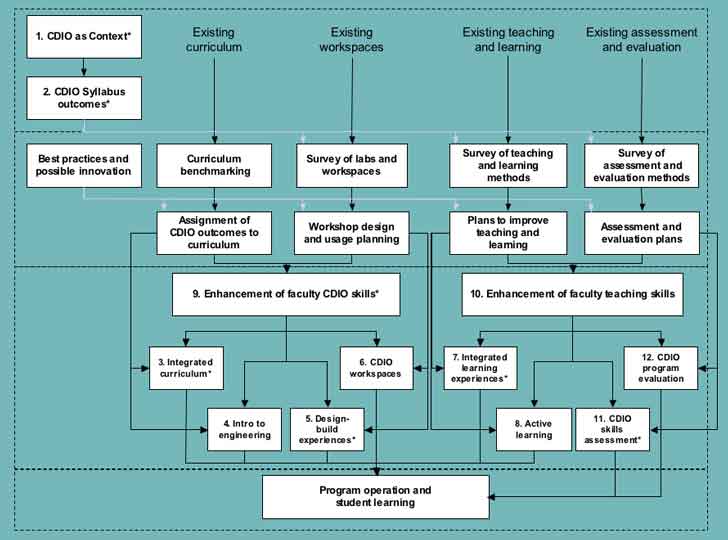The CDIO Initiative was specifically designed as a template that can be adapted and adopted by any university engineering school. CDIO is not open to individuals on their own, but rather to individuals employed by or affiliated with collaborator institutions.
Because CDIO is an open architecture model, it's available to all university engineering programs to adapt to their specific needs. Participating universities (“collaborators”) regularly develop materials and approaches to share with others.
CDIO has open and accessible channels for the program materials and for disseminating and exchanging resources. CDIO collaborators have assembled a unique development team of curriculum, teaching and learning, assessment, design and build, and communications professionals. They are helping others to explore adopting CDIO in their institutions.
At the request of program leaders at universities that are adapting and implementing CDIO, we offer this startup advice.
The advice is targeted to individuals or small teams leading the academic reform, and it may also be helpful for faculty members and other academic leaders (e.g., deans). It captures and distills lessons learned by the initial CDIO collaborators.
The iKit will help you adapt and implement CDIO. A notional scheme for this is shown on the Adoption Process diagram — which is not as confusing as it looks!

The Adoption Process Diagram Explained
The process starts at the top. The initial steps are to adopt the principle that CDIO is the context of engineering education (Standard 1) and then determine the outcomes for learning of the skills associated outlined in the CDIO Syllabus (Standard 2). These two steps establish the context, program aims, and specific goals for learning.
The next step is to establish an inventory of where you begin, by benchmarking your program in four theme areas: Your curriculum, your use of workspaces, your approaches to teaching and learning, and your assessment practices.
In each of these four areas you can then identify areas for improvement, and design aspects of your program to meet your goals. This leads to activities that satisfy Standards 3-8 and 11 and 12. The columns in the Implementation Flow diagram are loosely aligned along the four themes: Curriculum, workspaces, teaching and learning and assessment.
Along the way to reaching your goals, you will probably find that you need to put in place or strengthen programs in enhancing faculty competence in CDIO skills, and in teaching, learning and assessment (Standards 9 and 10).
The explanations in the individual iKit sections will help key the various resources to the appropriate steps in the Adoption Process.


